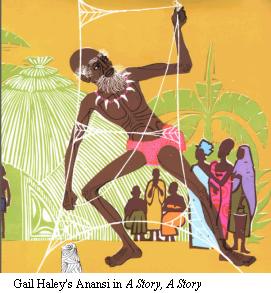Stacks challenge #3: Plain & Fancy
Brief thoughts
Inspired by others tackling non-fiction, I picked Susan Burrows Swan's Plain & Fancy: American Women and Their Needlework, 1650-1850. Packed with illustrations, the book combines slight social history with a detailed study of the types of needlework practiced in America over two centuries. Swan was a curator at Winterthur and, judging by that background and the few sites that have reviewed her titles, her intended audience has far more experience with needlework than I do; my interest was in the social and cultural history.
One of the book's strengths is its heavy use of primary sources -- diaries, advertisements, letters, and, of course, the needlework itself -- allowing glimpses of people and institutions. Swan touches on the progression of needlework in various female academies, changing trends in fashions, and the gradual deterioration in skill over the centuries, with an admitted emphasis on decorative, rather than practical, sewing. There are rare flashes of humor, as when she describes "a sprightly picture, probably intended as a mourning picture, by Lucy Nye . . . [who] apparently had no one to mourn, so instead of a name on the tomb, she substituted a cheerful verse." The text is brief and accessible enough to make it fairly easy reading, though the book's design is occasionally an impediment. (Not all illustrations are on -- or near -- the pages where they're discussed; new terms are followed by the phrase "see Glossary", sometimes accompanying a discussion that repeats information from that source, other times with no supplementary information whatsoever.) Nonetheless, it's a useful, if not essential, reference for studying women's and children's social history (and seems highly regarded by those collecting and researching needlework).
And a related link...
Looking for online commentaries on Plain & Fancy turned up not a review but a dazzling example of social history based on a needlework artifact, Cross-Stitched History: Artistry and Ambition in Christina Arcularius’s Tree of Knowledge Sampler, written by Margaret K. Hofer, curator of decorative arts at the New York Historical Society. It's actually part of the Commonplace: The Interactive Journal of Early American Life site, which, as the title suggests, offers an assortment of articles about American history.
Inspired by others tackling non-fiction, I picked Susan Burrows Swan's Plain & Fancy: American Women and Their Needlework, 1650-1850. Packed with illustrations, the book combines slight social history with a detailed study of the types of needlework practiced in America over two centuries. Swan was a curator at Winterthur and, judging by that background and the few sites that have reviewed her titles, her intended audience has far more experience with needlework than I do; my interest was in the social and cultural history.
One of the book's strengths is its heavy use of primary sources -- diaries, advertisements, letters, and, of course, the needlework itself -- allowing glimpses of people and institutions. Swan touches on the progression of needlework in various female academies, changing trends in fashions, and the gradual deterioration in skill over the centuries, with an admitted emphasis on decorative, rather than practical, sewing. There are rare flashes of humor, as when she describes "a sprightly picture, probably intended as a mourning picture, by Lucy Nye . . . [who] apparently had no one to mourn, so instead of a name on the tomb, she substituted a cheerful verse." The text is brief and accessible enough to make it fairly easy reading, though the book's design is occasionally an impediment. (Not all illustrations are on -- or near -- the pages where they're discussed; new terms are followed by the phrase "see Glossary", sometimes accompanying a discussion that repeats information from that source, other times with no supplementary information whatsoever.) Nonetheless, it's a useful, if not essential, reference for studying women's and children's social history (and seems highly regarded by those collecting and researching needlework).
And a related link...
Looking for online commentaries on Plain & Fancy turned up not a review but a dazzling example of social history based on a needlework artifact, Cross-Stitched History: Artistry and Ambition in Christina Arcularius’s Tree of Knowledge Sampler, written by Margaret K. Hofer, curator of decorative arts at the New York Historical Society. It's actually part of the Commonplace: The Interactive Journal of Early American Life site, which, as the title suggests, offers an assortment of articles about American history.


